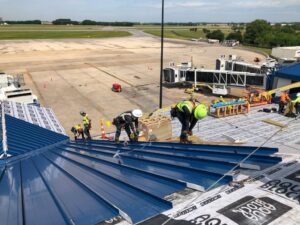Atlanta’s New Housing Initiative: Turning Old Schools into Homes
Atlanta, known for its vibrant culture and rich history, is taking a bold step towards solving the affordable housing crisis. The city has recently partnered with Atlanta Public Schools to convert abandoned school buildings into affordable housing. This initiative aims to tackle two pressing issues: the rising cost of housing and the presence of unused, oft-forgotten educational facilities scattered around the city.
Why Abandoned Schools?
As the demand for affordable living spaces increases, many old school buildings have been left to wither away. By revamping these structures, the city is not only reviving the community around them but also making effective use of existing real estate. The idea is simple yet powerful: transform spaces where education once thrived into homes that can help families thrive.
A Win-Win Situation
This new housing project offers numerous benefits. First and foremost, it provides a solution to the ongoing housing affordability crisis that has affected many Atlanta residents. With the cost of living continuously rising, finding a place to call home has become a daunting challenge for countless individuals and families.
Additionally, converting schools into housing units could breathe new life into neighborhoods that may be in decline. It’s an opportunity to bring in families, foster community connections, and create a sense of belonging. The idea of children playing in the same spaces where they once learned can stir a sense of nostalgia and pride in local residents.
The Details of the Initiative
The collaboration between the City of Atlanta and Atlanta Public Schools marks a significant commitment to addressing housing needs. While specific buildings have yet to be identified for conversion, officials have indicated that they are keen on targeting those that are structurally sound but no longer serve their original purpose. The agenda includes detailed assessments of these buildings to determine their potential for renovation.
Community Involvement
This initiative isn’t a top-down mandate; instead, community input is expected to play a vital role. Atlanta officials are exploring ways to engage local residents, stakeholders, and neighborhood associations to ensure the conversions meet the needs and desires of the people living in the area. Listening to the community ensures that the converted spaces don’t just look good on paper; they need to feel like homes to the individuals and families who will eventually reside there.
Challenges Ahead
Of course, any ambitious project comes with its share of challenges. One of the primary concerns includes finding adequate funding to refurbish the buildings while maintaining their historical integrity. Another challenge is navigating the legal and zoning regulations that govern such transformations. The city is working diligently to address these hurdles right from the start.
The Bigger Picture
At its core, the collaboration between the City of Atlanta and Atlanta Public Schools is more than just a housing project; it’s a step towards revitalization and hope. As the city continues to grow, ensuring that every resident has access to affordable housing becomes increasingly critical. This initiative exemplifies a creative approach to addressing a fundamental need while respecting the city’s history.
Final Thoughts
As Atlanta moves forward with this innovative project, it’s essential for residents and stakeholders to stay informed and involved. The transformation of old schools into affordable housing not only serves as a solution to a housing crisis but also as a reminder of the power of community and collaboration. It’s exciting to think about what the future holds—where empty school halls will echo with the sounds of families making new memories.
Let’s keep our eyes peeled for updates on this inspiring initiative as it unfolds. It’s a shining example of how ingenuity and a shared vision can open doors to new possibilities in our city!







